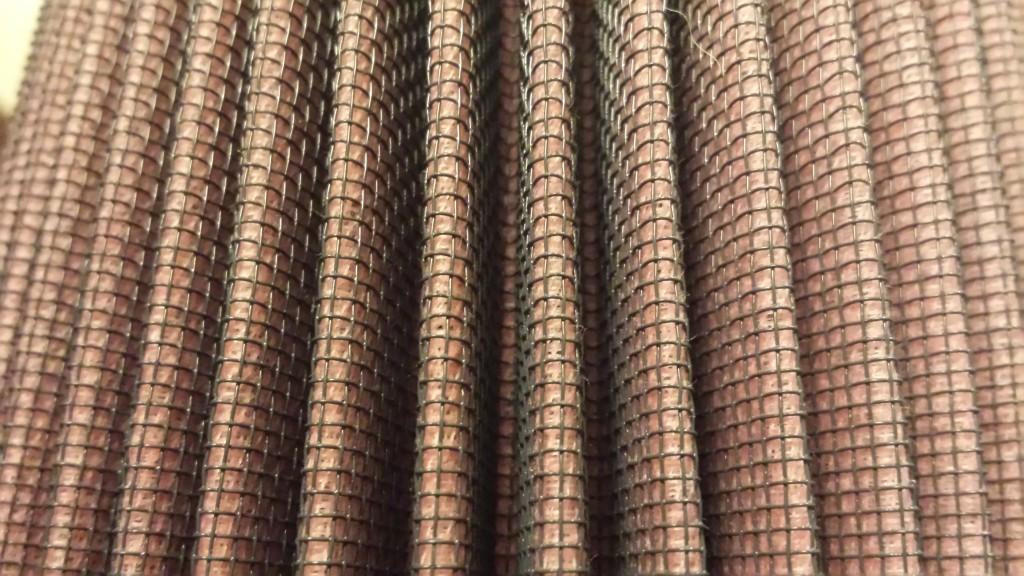Depends on whether performance is restricted by the existing filter. In a properly designed diesel, simply changing the filter to one with less restriction should make no difference - if it does, then the engine is overfuelling with the existing filter. (There will be a very slight reduction in the pumping losses of the engine, but I doubt it would be measurable, let alone perceptible)
In my humble opinion, the major attribute of so-called performance filters is that they abrogate the aircleaner's other function, that of intake silencer, so that the car sounds faster!
John
John
JDNSW
1986 110 County 3.9 diesel
1970 2a 109 2.25 petrol
No not at all. They are all part of the spectrum of fibrous filters.
HVAC filters you refer to are generally very loosely packed, thick media, with very low capture efficiency. They generally have an electrostatic charge imparted on the (plastic) fibrous media in order to improve capture efficiency.
Car air filters are also fibrous filters, whether made of cellulose, polymer or cotton fibres. Although they look "thin" to your eyes, under a microscope (and to the microscopic particles), they are a comparatively thick media. e.g. I have microfibre glass media here that is 0.4 mm thick, but with a mean fibre diameter of 100 nm, that is a lot of fibres the air must pass by in order to pass through the filter.
The only air filters which are not fibrous filters, are foam and membrane filters - the latter not being used for engines due to very high pressure drop.
Of course on a diesel any pressure drop both before the inlet valves and after the turbo will create pumping losses as it is extra energy which needs to be overcome. However the air filter is very low down on the list, after the exhaust system, intake system, intercooler, etc... If you had just a dump pipe after the turbo (no exhaust) and a very short, properly sized intake with minimal bends, then it might be time to look at the filter.
Before you get that far, there are some other things to consider.
Since filters aren't sieves, changing the surface area of the media (keeping everything else the same) will change the performance of the filter - i.e. how much dust of each particular size it captures. Increasing filter area will decrease flow velocity and decrease inertial capture forces.
What hasnt been mentioned is airspeed over the filter media. Too high and your only filtering rocks.
Of course the K&N is part of a spectrum. But I must disagree about a cotton thread I believe that individual ctton fibres would be bound too tightly to allow any air flow between only around the complete thread.
I believe your example shows a relatively deep complex of fibres.
In any case there are many tests over the years that show that in practice K&N filters are inefficient.
As well as that the K&N oil is well known to foul MAFs which is the last thing a TD5 owner wants and that was the OP. Of course K&N dispute this but in reality it is a big problem if owners are unable to achieve the oil levels demanded of K&N to not foul MAFs.
Theory is one thing Practice another.
Regards Philip AErr, Philip, isn't a woven strand of cotton a multitude of fibres possibly
thicker than a comparable cellulose fibre (paper) filter
Absolutely. A good and really big filter will both filter really well and give almost no noticable pressure loss.
But even a correct sized filter (the one with your 4BD1 is rather large) will flow more than you ever need while providing an acceptable pressure drop even with a whole shovel full of dust trapped in it.
I think we can probably agree the K&N media is a very poor design. Woven cotton makes a very poor filter, however it still works as a fibrous filter more than any other mechanism.
There are "holes" in the weave of a KN that you can see (see image), however the air wouldn't flow only through these holes - and even if it did, under a microscope there would be some fibres in the "hole/pore" area...

Air filter fitted
| Search AULRO.com ONLY! |
Search All the Web! |
|---|
|
|
|
Bookmarks